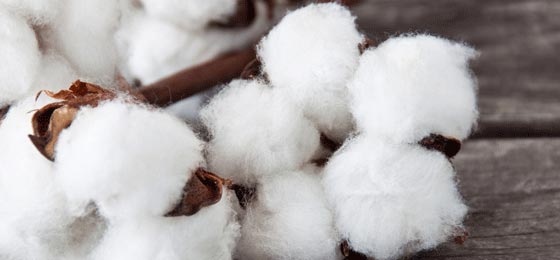

Similar to carbon nanotubes that are used in cycling helmets and tennis rackets, cellulose nanofibres are extremely light while being extremely tear-resistant.
But their production is significantly cheaper because they can be manufactured from plant waste of cotton or banana plants. “It is only a matter of time before they prevail on the market,” says Christoph Weder of the Adolphe Merkle Institute at the University of Fribourg.
In the context of the National Research Programme “Opportunities and Risks of Nanomaterials” (NRP 64), he collaborated with the team of Barbara Rothen-Rutishauser to examine whether these plant-based nanofibres are harmful to the lungs when inhaled.
The investigation does not rely on animal testing; instead the group of Rothen-Rutishauser developped a complex 3D lung cell system to simulate the surface of the lungs by using various human cell cultures in the test tube.
The shorter, the better
Their results (*) show that cellulose nanofibres are not harmful: the analysed lung cells showed no signs of acute stress or inflammation. But there were clear differences between short and long fibres: the lung cell system efficiently eliminated short fibres while longer fibres stayed on the cell surface.
“The testing only lasted two days because we cannot grow the cell cultures for longer,” explains Barbara Rothen-Rutishauser. For this reason, she adds, they cannot say if the longer fibre may have a negative impact on the lungs in the long term. Tests involving carbon nanotubes have shown that lung cells lose their equilibrium when they are faced with long tubes because they try to incorporate them into the cell to no avail.
“This frustrated phagocytosis can trigger an inflammatory reaction,” says Rothen-Rutishauser. To avoid potential harm, she recommends that companies developing products with nanofibres use fibres that are short and pliable instead of long and rigid.
National Research Programme “Opportunities and Risks of Nanomaterials” (NRP 64)
The National Research Programme “Opportunities and Risks of Nanomaterials” (NRP 64) hopes to be able to bridge the gaps in our current knowledge on nanomaterials. Opportunities and risks for human health and the environment in relation to the manufacture, use and disposal of synthetic nanomaterials need to be better understood. The projects started their research work in December 2010.
(*) C. Endes, S. Mueller, C. Kinnear et al. (2015). Fate of Cellulose Nanocrystal Aerosols Deposited on the Lung Cell Surface In Vitro. Biomacromolecules online: doi: 10.1021/acs.biomac.5b00055
(Journalists can obtain a pdf file by writing to: com@snf.ch)
Contact
Prof. Barbara Rothen-Rutishauser
Adolphe Merkle Institute
University of Fribourg
Ch. des Verdiers 4
CH-1700 Fribourg
Tel.: +41 (0) 26 300 95 02
E-mail: barbara.rothen@unifr.ch
http://www.nfp64.ch/E/Pages/home.aspx
http://www.snf.ch/en/researchinFocus/newsroom/Pages/news-150507-press-release-nr…












